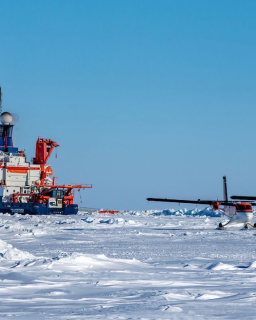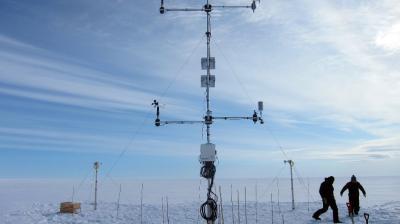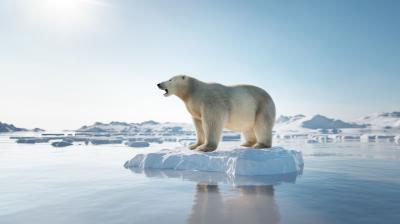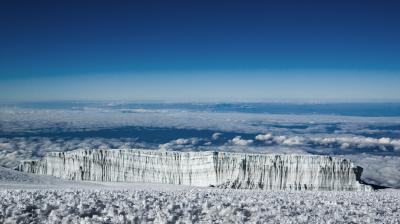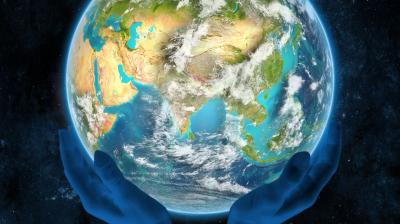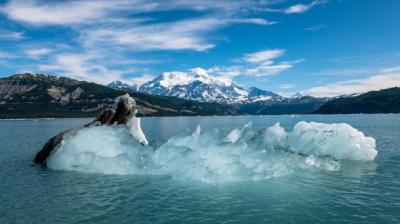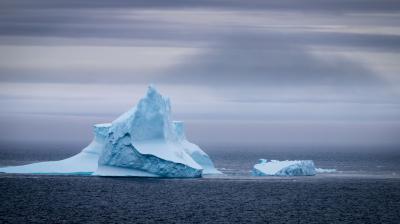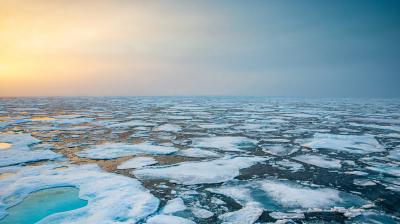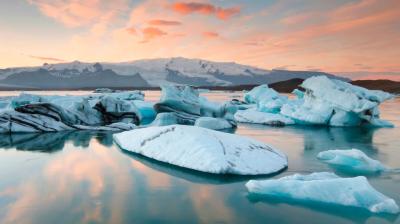
Cryosphere
Cryosphere includes the components of the Earth System at and below the land and ocean surface that are frozen, including snow cover, glaciers, ice sheets, ice shelves, icebergs, sea ice, lake ice, river ice, permafrost, and seasonally frozen ground, and solid precipitation.
Overview
The term “cryosphere” originates to the Greek word ‘kryos’ for frost or ice cold.
The cryosphere impacts every living being on the planet. It extends across the globe and can appear seasonally or be permanently present in most parts of the world. The snow, glacier, permafrost, and frozen ground are significant storage and sources of freshwater, sustaining ecosystems and supporting livelihoods in and far beyond the regions where these are located. Approximately 70% of the Earth’s freshwater exists as snow or ice.
All living beings depend directly or indirectly on the cryosphere. For example, as all major rivers originate from mountains, the mountain cryosphere plays an important role in providing and regulating freshwater resources for around half of the world’s population, including for those living in lowland areas, such as the Ganges-Brahmaputra Delta. Furthermore, alterations and loss of critical snow and ice are increasing the risk of other hazards.
The state of cryosphere is also a useful indicator for climate variability and change. Improved monitoring is critical l to understand Earth’s weather, climate, and water cycles. The cryosphere, its changes, and its impacts have received increased attention in recent years, creating a demand for authoritative information on the state of the world’s snow and ice resources.
Impact
Links between the cryosphere and climate change are numerous.
The Intergovernmental Panel on Climate Change (IPCC) Special Report on the Ocean and Cryosphere in a Changing Climate (SROCC) states that “over the last decades, global warming has led to widespread shrinking of the cryosphere, with mass loss from ice sheets and glaciers, reduction in snow cover, and Arctic Sea ice extent and thickness, and increased permafrost temperatures”.
Cryosphere data also plays a critical role in forecasting and prediction models.
Forecasting for snowfall, solid precipitation, snow cover, snowstorms, icing and river, lake, soil, and sea-ice freeze-up and break-up time is critical for people living in cold climate regions.
Sea level rise is a major concern for coastal regions, especially heavily populated zones, and is critical for a few small island nations. Although the volume equivalent of glaciers in terms of global sea level rise is small (0.4 m) compared to that of the ice sheets of Greenland (7.2 m) and Antarctica (about 58 m), their relative contribution to recent global sea level rise has been much larger. Melting of glaciers and ice caps in the second half of the 20th century led to about a 2.5 cm rise in sea level, in contrast to the loss of ice from the Greenland and Antarctic ice sheets, which added about 1 cm to sea level.
Cryosphere data is also important for flood forecasting and managing water resources for household use, hydropower production, agriculture (irrigation) and other sectors.
WMO's response
There are several WMO initiatives that report on the status of cryosphere.
The WMO's Global Cryosphere Watch (GCW) fosters international coordination and partnerships between scientific and operational communities with the goal of meeting the cryosphere data and information need of Members and partners, in support of Earth system monitoring, modelling and prediction.
The Executive Council Panel on Polar and High Mountain Observation, Research and Services (EC-PHORS) plays a meaningful role on overseeing, coordinating, and monitoring how polar and high-mountain observations, research, services and policies are developed and implemented within and externally to WMO, in response to significant changes in the polar and high mountain environments.
The Arctic-HYCOS project aims at collecting and sharing hydrological data and information for the Arctic basin to enable better climate research and predictions in the Northern Hemisphere. The project serves as a vital platform for the regular collection and free exchange of Arctic hydrological data from all participating nations.


